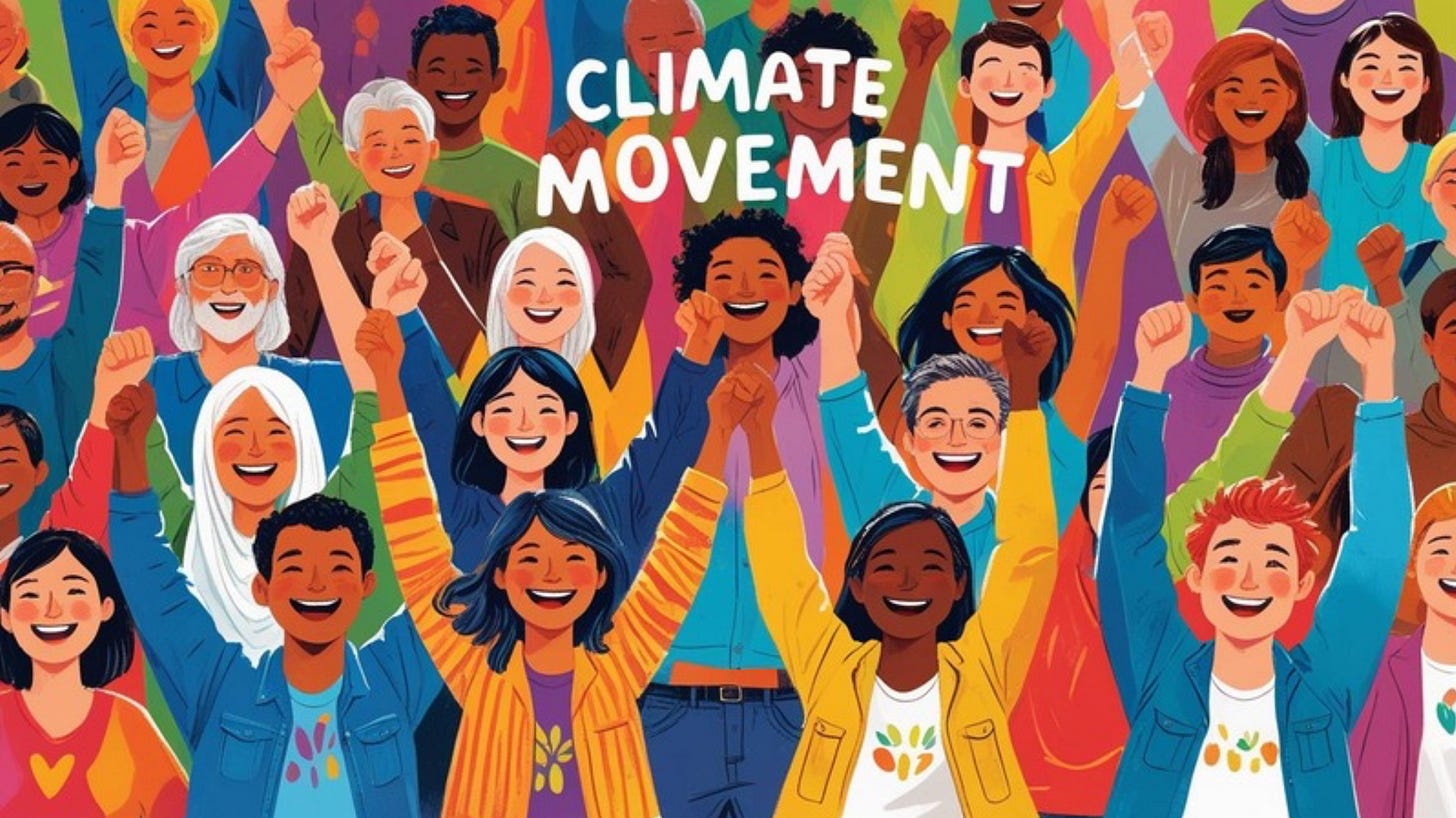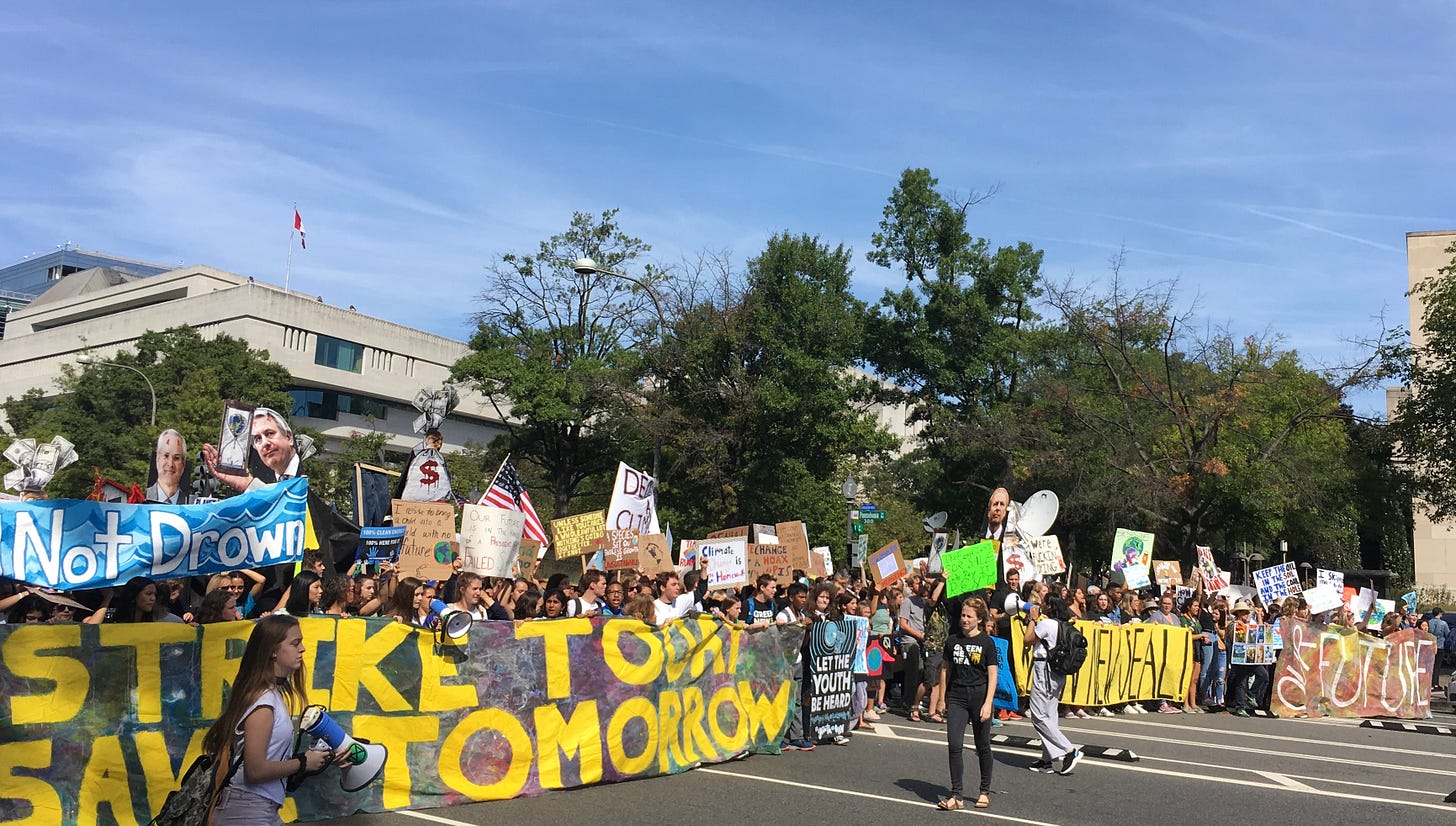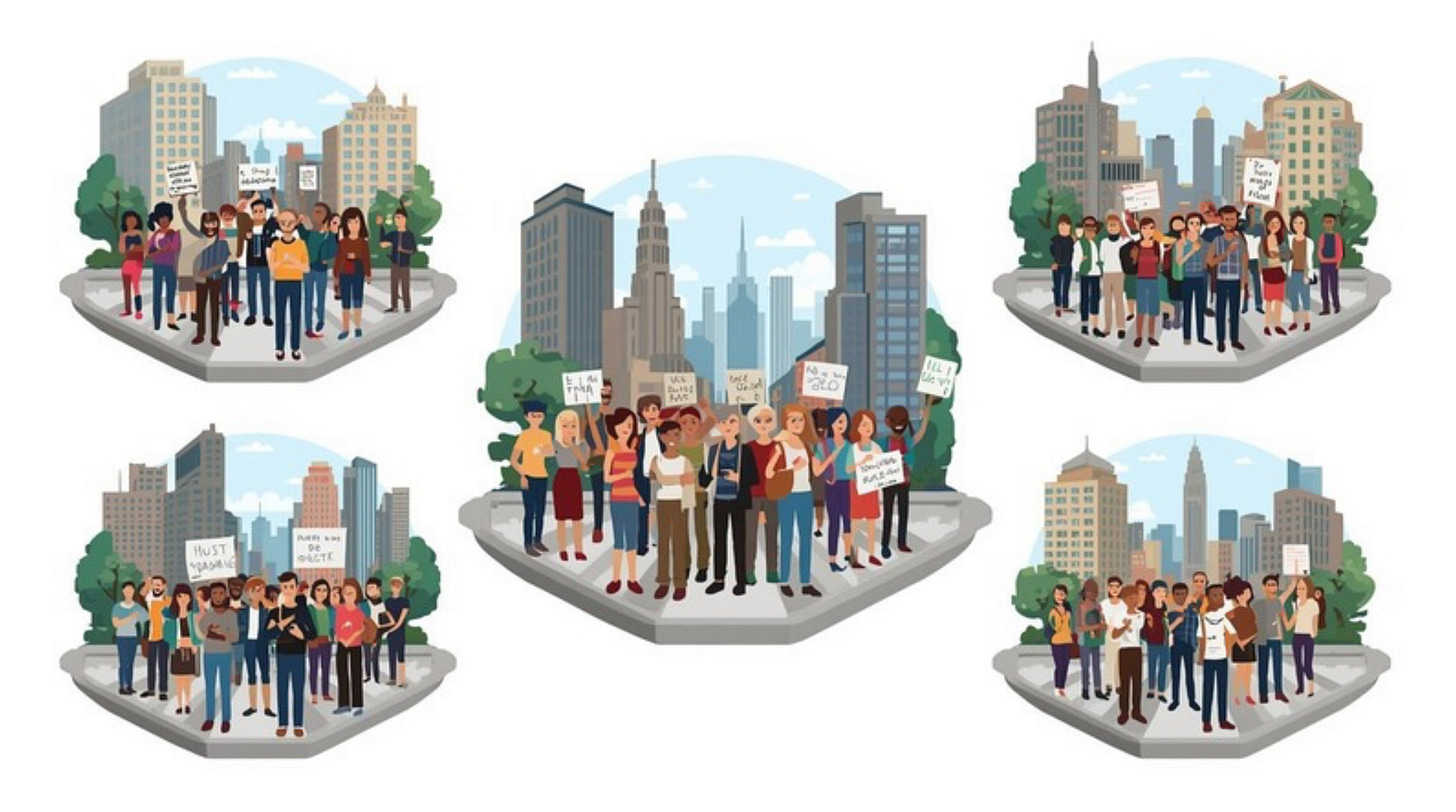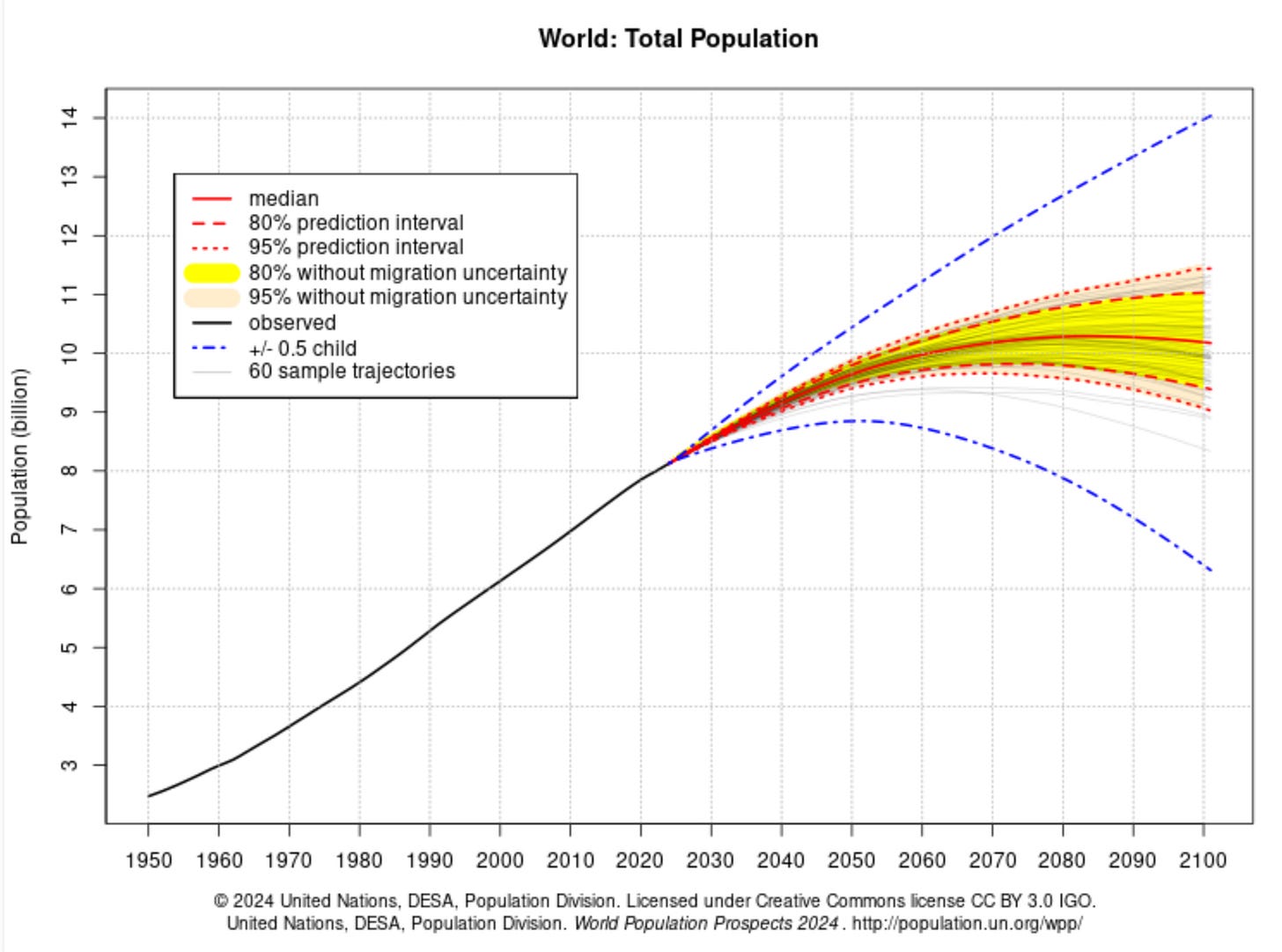Big and Broad and Active Enough: The First Characteristic of the Climate Movement
Olympian Fields of Action Series Post #5
Being Big and Broad and Active Enough is the first of the Climate Movement’s 7 Characteristics/Imperatives/Movement-building Goals.
So what does big enough look like? Perhaps surprisingly, not that big! As Erica Chenoweth’s research of past movements has shown, in many situations 3.5% of a population is all you need. Chenoweth wisely calls 3.5% a rule of thumb. Some successful movements have been even smaller. Others who have attained 3.5% haven’t succeeded. So it is not an inexorable law or a magical formula. But in most cases attaining 3.5% gives you an excellent shot at success.1
However, I think we need to be bigger than 3.5 percent.
In order for the Climate Movement to make the impossible possible and the possible actual and the actual beautiful and our future come faster, thereby playing our indispensable role, I believe we must recruit:
5% of the world’s population or roughly 400 million2 by 2030, and
10% by 2040.
But why must we be big enough, or this big?
Because of the speed and scale of change needed, we must achieve a transformation the likes of which history has never seen by making our future come faster.
Given this:
We can’t wait for the politicians to get their act together, for if we do it will be too late.
We can’t wait for popular support to inch closer to the level that’s needed.
We can’t wait for markets to gradually transition us to cleaner and more efficient technology.
We can’t wait for needed inventions and innovations to appear in the ordinary course of time, even with an accelerating rate of technological change or ARTC.
To play our indispensable role and make our future come faster, we must grow at a speed and scale commensurate with the challenge our vision, purpose, and Major Goal presents.
So what does 400 million by 2030 mean? Here are three take-aways.
We simply can’t grow fast enough.
We cannot be ignored.
We will transform the world.
To spearhead the needed transformation we must not only be big enough. We also need to be broad enough to encompass most of society. When those outside the Climate Movement see the breadth of our Member-Athletes, how we look like society, this will help engender allies for our cause by creating:
Climate Action Supporters — the clinchers, the closers, the calvary
policymakers ready to address all the tough challenges, and
inventors, entrepreneurs, and business people ready to provide marketable solutions.
However, being big and broad enough will all be for naught if we aren’t active enough.
A sleepy giant on the couch won’t get it done.
Climate Action Supporters and potential recruits and allies must see us in action. And for that to occur at the scale required we must have a constant stream of actions in public taking place in every country around the world, amplified by news coverage and social media, so our story is told in a way that cannot be suppressed, missed, or ignored.
The rest of society must be reminded constantly of the need for climate action at the speed and scale required.
To what end? Just this: we must achieve message saturation and values engagement within our cultures and societies.
We must achieve message saturation and values engagement.
This means that leaders and the average person are reminded regularly of the necessity of bold climate action now and that everyone has a role to play — so much so that this is at the forefront of their hearts and minds and engages their values and connects to what they hold most dear.
To achieve message saturation and values engagement, it is best if action events have a message/values-amplification strategy. While it is helpful and strategic to be seen and experienced in person by those who are near the event, it is even more strategic to have others who are not present in person know about your action event.
Climate Action Athletes and Climate Action Supporters should get the word out through the news media and social media. Even if we aren’t able to generate traditional news coverage for a particular event — what we call “earned media” — we can still communicate via our social media channels with videos, pictures, audio, and text.
In other words, we must communicate to as many people as we can utilizing as many ways as we can as creatively and effectively as we can to increase support for action, grow our Movement, and support/push action by government leaders.
We must be big and broad and active enough to help everyone see the moment we are in and do something about it. We are in kairos-climate-time where every moment is a kairos-climate-moment that provides us chance after chance to make a difference.
But when all is said and done we will only make a difference, we will only achieve the victories we need together. And we will only make a difference together if we’re big and broad and active enough to push others and society and the world to overcome climate change at the speed and scale necessary. We must be big and broad and active enough to not only push for a transformation never before accomplished in history, but to ensure that this transformation creates a just and prosperous sustainability that enhances wellbeing for everyone and everything.
Ours is a very big job — and we’re up to it.
That’s a very big job — and we’re up to it.
We need enough Climate Movement Member-Athletes in every political municipality, district, state, and country around the world to push government leaders at every level to do much more much faster than they would have ever done left to their own devices — and to stay the course and not backslide or falter or waiver.
We need to be big and broad and active enough to overcome the opposition from powerful vested special interests, and nations dragging their feet or actively opposing action, from archaic laws and regulations and bureaucratic inertia, from companies who resist or try to snuff out needed innovations and products, from our natural human tendency to resist change in whatever needed form it takes.
Wherever there is resistance to implementing efficiency measures in a business, we must be there.
Wherever the mantra “That’s the way we’ve always done things” forestalls creativity and needed climate action, we must be there.
Wherever better ideas are ridiculed, we must be there.
Wherever cultural traditions unnecessarily impede action, we must be there.
Wherever others say “We’re going too fast!” or “We need to take things slow and not rock the boat too much,” we must be there.
Wherever climate action and our Movement is attacked, we must be there.
In whatever forms opposition or resistance may take, wherever they are we must overcome them. On all these Olympian Fields of Action we must compete in sufficient, even overwhelming numbers.
But we also need to be big and broad and active enough not simply to stop bad stuff, but to set wrong right and make things better on all of our Fields of Action. Even if there is no active resistance, we must be working to create positive change — because our normal sense of “good enough” simply isn’t good enough.
We must be better than good enough.
We must be better than good enough to make the impossible possible and the possible actual and the actual beautiful as we make our future come faster.
Finally, whenever some of us grow weary and need to pass the baton or are being triple-teamed and need to pass the ball, others of us must be there.
In sum: there are just too many Fields of Action and too many positions to fill on our teams for us to stop at 3.5 percent.
The 5% by 2030 and 10% by 2040 are stretch goals certainly. But are they even in the realm of possibility?
Yes, based on a worldwide survey conducted between September 2023 and May 2024 of over 73,000 from 77 countries representing 87% of the world’s population.
The survey found the following.
80 percent want their country to do more.
86 percent want the nations of the world to work together.
72 percent want a quick transition to renewables, with 41 percent wanting it to be very quick. Even in fossil fuel producing countries, in all of them except Russia and Iraq a majority wants a quick transition — with China leading the way at 80 percent.
53 percent are more worried about climate than the year before.
A majority of people across all age groups are worried, with the concern of older adults catching up to that of younger generations.
Over half think about climate daily or weekly.
69 percent say climate concern influences life decisions like where to live and work.
43 percent said extreme weather was worse this year than last.
78 percent want their country to do more to protect people from extreme weather.
79 percent want rich countries to help poor ones address climate change.
81 percent want to protect and restore nature.
All of this strongly suggests we have a very large pool of people who are supportive of strong action, and having 5% or 400 million by 2030 make a sustained commitment to collective action over time is quite doable. (For a discussion of the US context, see my earlier post.)
Even in more recalcitrant countries, with every stride towards becoming big and broad enough we make hope happen as we make the impossible possible and the possible actual and the actual beautiful, as we make our future come faster and move that much closer to victory. Join us!
If you are new here check out the Intro Series and the other posts in this Olympian Fields of Action Series. If you like this post, please “like,” comment, and share. And thanks for all you’re doing.
For an excellent summary, see Erica Chenoweth (they/them), Questions, Answers, and Some Cautionary Updates Regarding the 3.5% Rule (April 2020). For a longer discussion, see their book, Civil Resistance: What Everyone Needs to Know (2021). In their forthcoming book, The End of People Power, Chenoweth will discuss how more recently popular movements have been less successful, due in large measure to tactics employed by autocratic governments. They suggest new strategies and tactics to deal with this situation.
The UN, in its median scenario, projects that the total human population will be approximately 8,569,124,911 in 2030. I am excluding children 0-4, who make up 645,159,855 of that total. (See UN, World Population Prospects 2024.) To find what the population would be of 5 year olds and up, we subtract 645,159,855 from 8,569,124,911 giving us 7,923,965,056. Five percent of that is 396,198,253. For our movement goal I am rounding up to 400 million.







